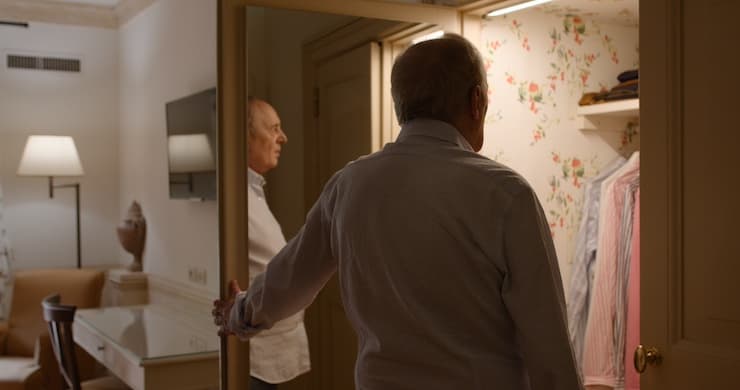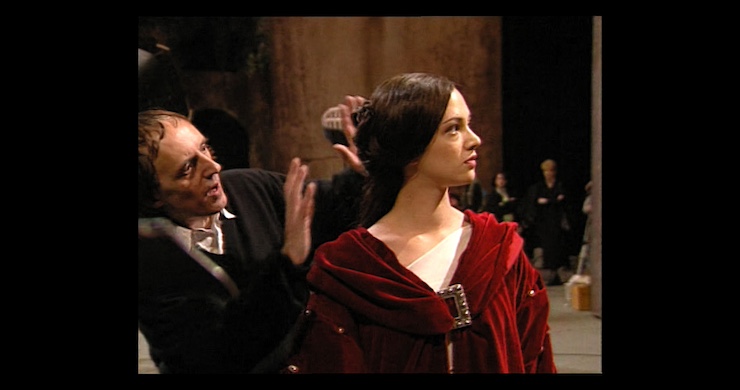IFC Center Turns Spotlight on ‘Cinematic Rockstar’ Dario Argento
Given some of the artistic and commercial travails Argento has experienced in his 60-some-odd-year career, the description of him is apt — with the possible exception of the outsized level of fame typical of rock stars.

‘Panic Attacks: The Films of Dario Argento’ and ‘Dario Argento Panico’
IFC Center
Opens January 31
“Dario Argento isn’t just a prominent Italian director,” filmmaker Simone Scafidi writes about the subject of his new documentary “Dario Argento Panico,” “he’s a cinematic rockstar.” A rockstar, huh? The description connotes a reputation that extends beyond mere celebrity. According to the scholars toiling away at Urban Dictionary, the sobriquet also entails having achieved recognition by overcoming sizable odds and sometimes outright hostility.
Given some of the artistic and commercial travails Mr. Argento has experienced in his 60-some-odd-year career, all of the above fits the bill — with the possible exception of the outsized level of fame typical of rock stars. Casual cinema-goers could be forgiven for scratching their heads upon mention of the director’s name. The titles of Mr. Argento’s pictures — “Four Flies on Grey Velvet” (1971), say, or “The Mother of Tears” (2007) — are just as likely to prompt puzzlement. “Dario who, did you say?”
Should the term giallo mean something to you, Mr. Argento isn’t only a rock star, but a standard bearer. How the Italian word for “yellow” came to connote a hyperbolic brand of post-Hitchcockian cinema stems from the heyday of the pulp press. Il Giallo Mondadori was a series of novels first published in 1929 dedicated exclusively to mystery and crime. The covers of these tomes featured sensationalistic and often lurid illustrations placed against an intensely yellow backdrop. How giallo Mr. Argento’s films are in terms of hue is an open question. “Sensationalistic” and “lurid” are more to the point.
Before helming his own pictures, Mr. Argento worked as a critic and scriptwriter. His most renowned credit in the latter regard is “Once Upon a Time in the West” (1968), which he wrote alongside director Sergio Leone and fellow auteur Bernardo Bertolucci. While directing his first film, “The Bird With The Crystal Plumage” (1970), Mr. Argento ran into his share of agita, not least being almost dismissed by its producer, Geoffredo Lombardo. Nor was the picture up to snuff for the other suit on the film, Salvatore Argento. If you can’t get dad’s approval ….

Thank goodness for Cesarina, Lombardo’s secretary. After attending a test screening, she wasn’t able to eat her lunch due to a case of the jitters. “The movie scared me,” she told her bosses. “It impressed me very much.” Lombardo dismissed Cesarina’s opinion as uneducated humbug, but released the movie anyway. When it proved to be an international hit — “The Bird With The Crystal Plumage” reached no. 1 at the U.S. box office, a first for an Italian film — Signore Lombardo was happy to take credit for nurturing a new cinematic talent. The now 83-year-old Mr. Argento recounts the story with understated relish.
Outside of cult circles, “Suspiria” (1977) is likely Mr. Argento’s best-known film. Jessica Harper stars as Suzy Bannion, an American ballet student who travels to Europe to study at the prestigious, if decidedly ominous, Tanz Academie. Before Suzy can even enter the school, two young women flee its premises — only to meet their fate at the hands of a mysterious figure given to extravagant forms of murder. What follows is a phantasmagoric abundance of raining maggots, vicious dogs, Greek witches, and Joan Bennett in her final film role as deputy headmistress, Madame Blanc.
“Things don’t have to make sense, they just have to seem organic”: This is how director Guillermo del Toro describes Mr. Argento’s aesthetic, an observation pretty much confirmed by the first person we see in “Dario Argento Panico,” the filmmaker Nicolas Winding Refn. Mr. Argento, Mr. Refn tells us, “is more like a painter, a musician, but he uses film as his medium.” Mr. Argento’s most striking films are, in his own words, “bizarre and full of new ideas.” Having first seen “Suspiria” while suffering from the flu, I can testify that I couldn’t always ascertain whether its wildly operatic doings was a marker of the film or a symptom of my fever.
Among those interviewed in “Panico” are the Argentinian filmmaker Gaspar Noé, the Spanish actress Cristina Marsillach, and screenplay collaborator Franco Ferrini. The biographical tangents that are touched upon in Mr. Scafidi’s documentary are fascinating, particularly the correspondence between Mr. Argento’s recurring use of female leads and his growing up with a mother who worked as a photographer of starlets. Then there’s the director’s daughter, Asia Argento, an auteur in her own right. Her stories of acting in her father’s films are, at moments, squirm-inducing — and not, as it is said, in a good way.
The IFC Center has mounted a series of Argento films, collectively titled “Panic Attacks,” in conjunction with the release of “Dario Argento Panico.” These include “The Bird with the Crystal Plumage,” “Suspiria,” and what many consider his masterpiece, “Deep Red” (1975). Lesser-known pictures like “Dracula 3D” (2013), with Rutger Hauer as Dr. Van Helsing, and “Tenebrae” (1987) fill out the bill.
New Yorkers with a predilection for uncovering the “guilty secrets we try to keep in our subconscious” will want to partake of Mr. Argento’s distinctively over-the-top vision.

